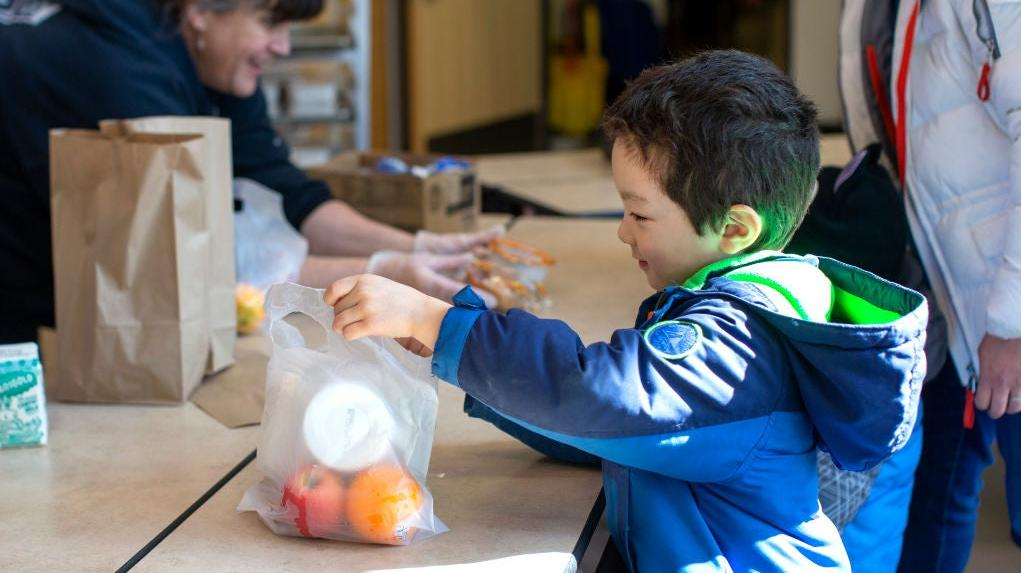The Complicated State Of Free School Meals In America
As two years of universal free lunch ends, will America ever return to it?
As a result of the pandemic, schools across the United States have had access to a nationwide universal free lunch program for the last two years. That program expired on June 30, which means that across the country, kids are heading back to school without meal availability they, and their parents, may have gotten used to and come to rely upon.
Some states, and towns, will continue to offer free lunch
Some states have taken matters into their own hands. California and Maine have adopted legislation to make universal free lunch permanent in their states. Meanwhile, Vermont, Massachusetts, and Nevada have adopted legislation to cover the cost of meals for the 2022-2023 school year. Whether those programs will extend beyond that is likely a matter for future legislation.
That leaves 45 states where universal free meals are not a guarantee, which means that for the vast majority of the country, in the coming weeks, things will revert to the way they were in 2019.
Families will again need to qualify to access free or reduced-price meals
Thanks to the National School Lunch Program, which was enacted in 1946, families whose income is at or below 130% of the federal poverty line qualify for free school meals. Families whose income falls between 130-185% of the federal poverty line qualify for reduced-price meals. In order to access those free or reduced meals, families must submit paperwork that provides details about their income.
In addition, some communities qualify for universal free meals because enough of a percentage of the town's families qualify. When that happens, the community may apply for the "Community Eligibility Provision," which allows its school to keep meals free for all students.
What’s happening with free meals at the federal level?
In 2021, a Senate bill, S.1530, which would have provided universal free lunch nationwide, was introduced, but after being read twice, it was referred to the Committee on Agriculture, Nutrition, and Forestry, and it appears not much has happened with it since.
In June, President Joe Biden signed the Keep Kids Fed Act, which provides some flexibility for summer meal programs but did not extend free lunch programs. The bill initially included a provision that would have eliminated the concept of "reduced price meals," meaning those who qualify to pay a reduced meal rate would get the meals for free instead, but that provision was taken out at the behest of Sen. Rand Paul before it passed.
How reduced-price school meals work
Reduced-price meals are available to families whose incomes falls within certain brackets. For context, the current thresholds for reduced-price meals are $33,874 for a household of two people; $42,606 for a household of three people; and $51,338 for a household of four people.
Reduced-price meals cost $0.40 per lunch and $0.30 per breakfast. A mother named Lorraine LeBlanc, who lives in Louisiana, recently talked to WBUR's On Point about how school lunch plays into her family's very tight annual budget. At the reduced rate, LeBlanc, whose income is too high for her to qualify for most other government programs, spends about $250 per year on lunches for her kids. She told WBUR that when her kids had access to universal free lunch during the pandemic years, she could instead spend that $250 on extra healthy, fresh food at home.
"Fresh and healthier, equal dollar signs," she said. "And a lot of people don't have the money. That's the first thing to go."
Dollar signs, of course, are also a big part of why universal free meal programs struggle to become the norm in the United States.
"You've got to recognize that it's much more expensive to make programs universal," Bob Greenstein, of the Brookings Institution, told Marketplace. "In Western Europe, more programs are universal. How do they do it? They raise a lot more in taxes."
The benefits of universal free meal programs
Universal free meal programs make meals readily available to all kids, without requiring parents to navigate a tangled web of paperwork proving their income eligibility, otherwise known as "means testing."
"Some of the families you most want to reach through means-tested programs are the ones who are going to struggle the most to document income, resources or lack thereof," Indivar Dutta-Gupta, president and executive director of the nonprofit Center for Law and Social Policy, told Marketplace. For that reason, he says, universal programs often do a better job of reaching people at all socioeconomic levels.
A working paper about the Community Eligibility Provision, or CEP, by the Census Bureau makes the point that universal free meals would "alleviate well-documented stigma" against those who receive free meals, which would have a positive ripple effect. In addition, a study conducted by Syracuse University in 2017 found that universal free meals had a positive impact on students' academic performance in the areas of English language arts and mathematics, with the most dramatic increases in performance in "non-poor" students. That means the benefits extend even to students whose household income wouldn't currently qualify them for any free lunch program.
What should you do if you aren't sure whether you qualify for free or reduced meals? Most of the paperwork associated with qualifying for free or reduced meals is handled through individual schools or school districts. More information can be found here.
